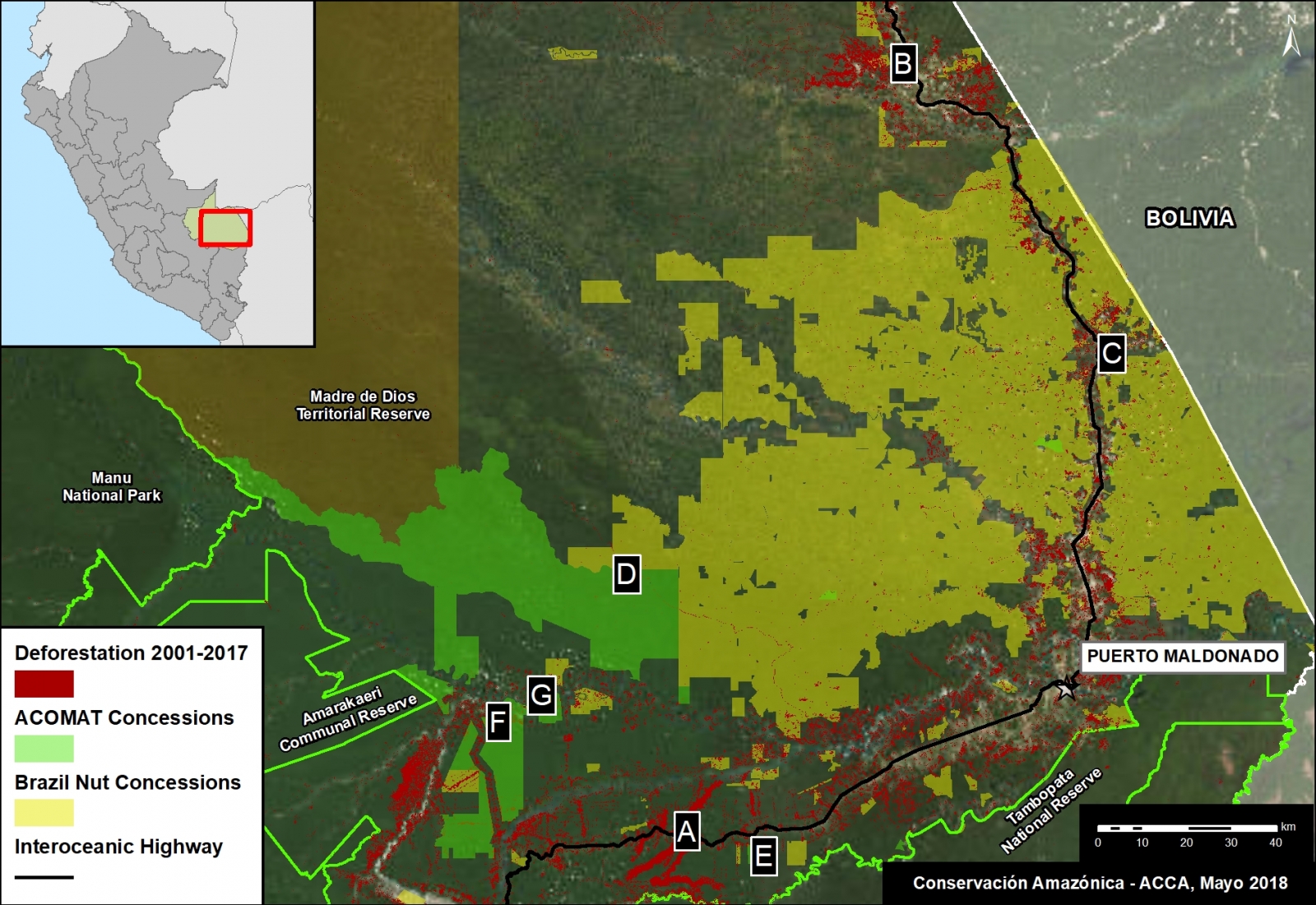At the heart of the southwest Amazon lies the Manu-Madidi Corridor, a chain of diverse protected areas anchored by Manu National Park in Peru and Madidi National Park in Bolivia, embedded within a mosaic of indigenous communities and other protected areas, forestry concessions and private lands.
This 9.5 million-hectare stretch of forest traverses a dramatic altitudinal range from the high Andes Mountains to lowland rainforest, creating habitats for a staggering diversity of plant and animal species.
Global climate change only increases the Manu-Madidi corridor’s significance as its mountain slopes offer a safety net for species to migrate and adapt to new habitat ranges as the climate warms.

Uncontrolled development, including the paving of Peru’s Interoceanic Highway and a boom in informal and illegal gold mining as well as agricultural expansion, threaten to fragment these vast forests. Breaking apart these contiguous habitats would destroy their ecosystem services and prevent wildlife from moving across uninterrupted swaths of forests—vital for species survival. New, poorly-planned roads have the potential to disrupt millions of hectares of lowland tropical forest and upset the cultural integrity of forest peoples. Low monitoring and enforcement capacity by communities and the government, overlapping land rights, and weak government capacity to manage protected areas limit the ability to adequately address these threats.
Our comprehensive approach harnesses our technical expertise in protected-area management and science as well as close partnerships with national park agencies and other authorities in Bolivia and Peru, including indigenous and rural communities living in and around these areas.
In this landscape in particular, Amazon Conservation’s real-time deforestation monitoring system provides key data for law enforcement, decision-making, and management. Our action steps are outlined below.


Strengthen long-term protection and climate resilience of existing protected areas and indigenous territories by developing management and decision-making tools, training and guiding on their use, and creating forums for greater coordination.

Improve connectivity and shielding of protected areas through development of forest-friendly enterprises as well as strengthening tenure.

Develop and deploy remote-sensing monitoring systems to improve the ability of communities and governments to detect, avoid and mitigate impacts from major threats.